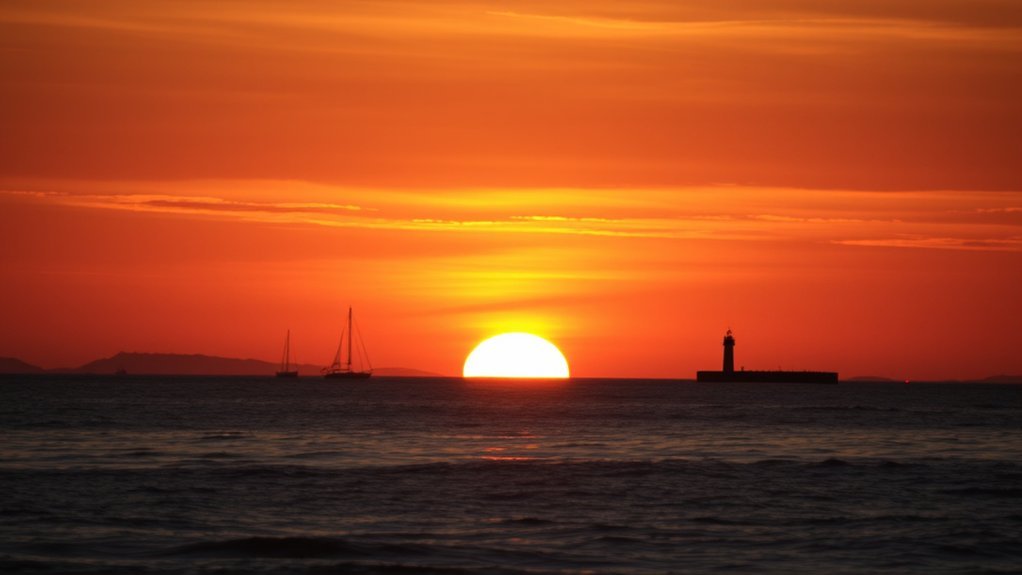As the sun dips below the horizon, casting a warm, golden glow across the landscape, many believe this is the only moment to capture stunning photographs. However, this notion oversimplifies the complexities of light. Understanding the true nature of the Golden Hour reveals a spectrum of lighting conditions that can elevate your photography. What if you could harness the beauty of midday sun or the subtlety of overcast skies? The possibilities may surprise you.
Understanding the Golden Hour: What It Really Is
The golden hour, often touted as the best time for photography, refers to the period shortly after sunrise and before sunset when natural light is soft and warm. During this time, the sun sits low in the sky, creating a diffuse light that enhances colors and reduces harsh shadows. This phenomenon occurs due to the angle of the sunlight, which travels through more atmosphere, scattering shorter blue wavelengths and allowing longer red and orange wavelengths to dominate. As a photographer, you’ll find that this golden light can transform ordinary scenes into visually stunning compositions. To make the most of this fleeting opportunity, you should plan your shoots around these times, ensuring you capture the ideal ambiance that only the golden hour can provide.
Common Misconceptions About the Golden Hour
Many photographers believe that the golden hour is the only time to achieve beautiful lighting, but this is a common misconception. While the golden hour does offer a warm, soft light, it’s not the sole opportunity for stunning photography. Midday light, for example, can create striking contrasts and vibrant colors, especially in urban settings. Additionally, overcast days provide diffused lighting that’s perfect for capturing details without harsh shadows. Relying solely on the golden hour limits your creative potential and may lead to missed opportunities. It’s essential to understand that various lighting conditions can yield compelling images. Embracing all times of day will enhance your versatility and help you develop a more nuanced approach to photography.
The Science Behind the Golden Hour Light
While you might be captivated by the warm glow of the golden hour, understanding the science behind this phenomenon reveals why it’s so visually appealing. During this time, the sun is low on the horizon, causing light to pass through more atmosphere. This increased distance scatters shorter blue wavelengths, allowing longer red and orange wavelengths to dominate. The result is a softer, warmer light that enhances textures and contrasts in your surroundings. Additionally, the angle of the sunlight creates elongated shadows, adding depth to your images. This combination of factors not only enhances colors but also evokes emotional responses, making scenes more inviting. Ultimately, this unique interplay of light and atmosphere is what makes golden hour so special.
Tips for Making the Most of the Golden Hour
To fully capitalize on the enchanting qualities of golden hour light, you’ll want to plan your approach thoughtfully. Here are four tips to guarantee you make the most of this magical time:
Maximize the enchanting qualities of golden hour light with thoughtful planning and strategic techniques.
- Timing is Key: Know the exact start and end times of golden hour in your location to maximize your shooting window.
- Scout Locations: Visit potential sites beforehand to identify angles and compositions that enhance the golden light.
- Use Reflectors: Bring reflectors to bounce light onto your subject, adding depth and warmth to your images.
- Experiment with Settings: Adjust your camera settings to find the perfect balance of exposure and creativity, as golden hour light can vary dramatically.
These strategies will help you capture stunning images that truly embody the essence of golden hour.
The Golden Hour Beyond Photography: Nature’s Beauty
The golden hour isn’t just a photographer’s paradise; it’s a breathtaking spectacle that showcases nature’s beauty in its most radiant form. During this magical time, the landscape transforms, revealing vibrant colors and enhancing textures. You can observe how light interacts with various elements, creating a serene atmosphere that’s both calming and invigorating.
| Element | Effect |
|---|---|
| Water | Reflects warm hues, creating shimmering effects. |
| Trees | Leaves glow, enhancing their green vibrancy. |
| Mountains | Shadows deepen, adding dimension and drama. |
| Sky | Shifts through a spectrum of colors, from gold to deep blue. |
Witnessing these changes can deepen your appreciation for the natural world, making every moment feel uniquely special.
Frequently Asked Questions
Can the Golden Hour Occur at Different Times in Various Locations?
Yes, the golden hour can occur at different times in various locations. It’s influenced by geographic location, time of year, and atmospheric conditions. You’ll notice distinct variations depending on these factors during your photography sessions.
How Does Weather Affect the Quality of Golden Hour Light?
Weather dramatically shapes golden hour light; clouds can soften it, creating a dreamy haze, while clear skies intensify warmth. Rain or fog might obscure it, turning your vibrant palette into muted pastels, impacting your photography’s mood.
Is There a Golden Hour for Different Seasons?
Yes, you’ll find variations in golden hour timing across seasons. In summer, it occurs later, while in winter, it’s earlier. Pay attention to how the sun’s position shifts, affecting light quality and duration.
Can Indoor Lighting Mimic the Golden Hour Effect?
Absolutely, you can use warm-toned indoor lighting to mimic the golden hour effect. By adjusting brightness and color temperature, you create a cozy, inviting atmosphere that captures that soft, magical glow of sunset light.
Does the Golden Hour Last Longer in Certain Geographic Areas?
Yes, the golden hour lasts longer in certain geographic areas, particularly near the poles during summer months. This extended duration results from the sun’s low angle and the curvature of the Earth affecting light diffusion.
